About 40% women in rural households work harder to fetch water in the COVID-19 lockdown
The COVID19 outbreak has added to the water woes of hundreds of rural women. The government and health agencies recommend frequent handwashing to avoid the spread of coronavirus, but where will this water come from?

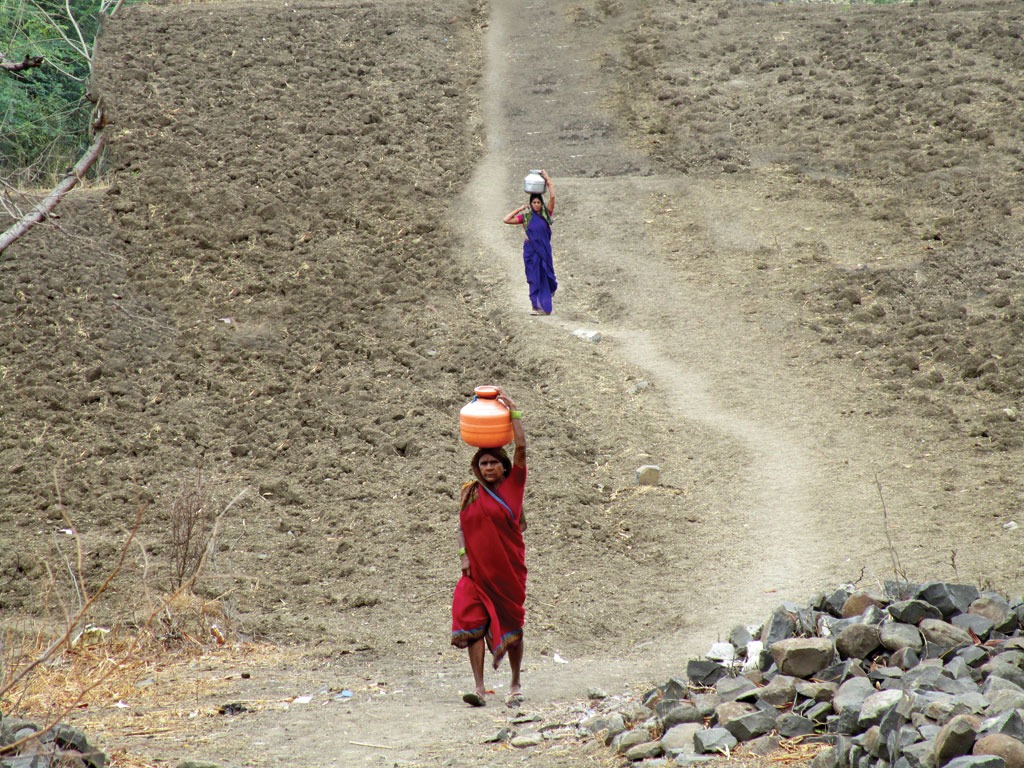
Hundreds of thousands of rural women complained of the extra distances they had to walk to find water for the family during the lockdown. Photo: Nidhi Jamwal
Hilonee Devi, a resident of Thengadih village in Jharkhand’s Deoghar district walks a kilometre every day to fetch water for her family of four. For the 46-year-old, water crisis is something she faces all year round. Come rain, hail, or the coronavirus disease (COVID19) pandemic, she has to daily step out and make multiple trips, at least five a day, she told Gaon Connection, to arrange water for her family.
“Hamara paani ka bahut takleef hai, aur yeh jindagi bhar ka takleef hai (We face a lot of water problems, and this problem is lifelong),” Devi told Gaon Connection.

In the last few months, the COVID-19 pandemic has added to her water woes as to avoid the spread of coronavirus, the government and health agencies recommend frequent handwashing. According to the World Health Organization, washing hands regularly and thoroughly with soap and water kills the viruses that may be on hands.
This means the daily water requirements of the family has increased and Devi has to get more water.
Like Devi, hundreds of thousands of rural women complained of the extra distances they had to walk to find water for the family during the COVID-19 lockdown. This was reflected in the recent first-of-its-kind national survey on the impact of COVID-19 pandemic on rural India, conducted by Gaon Connection, across 23 states and three union territories in the country.
The survey tried to find out whether households in rural areas had adequate water for handwashing. Overall two-thirds of the households reported having adequate water for this purpose. But 38 per cent households complained that the women had to travel extra to meet the additional water needs of the family.
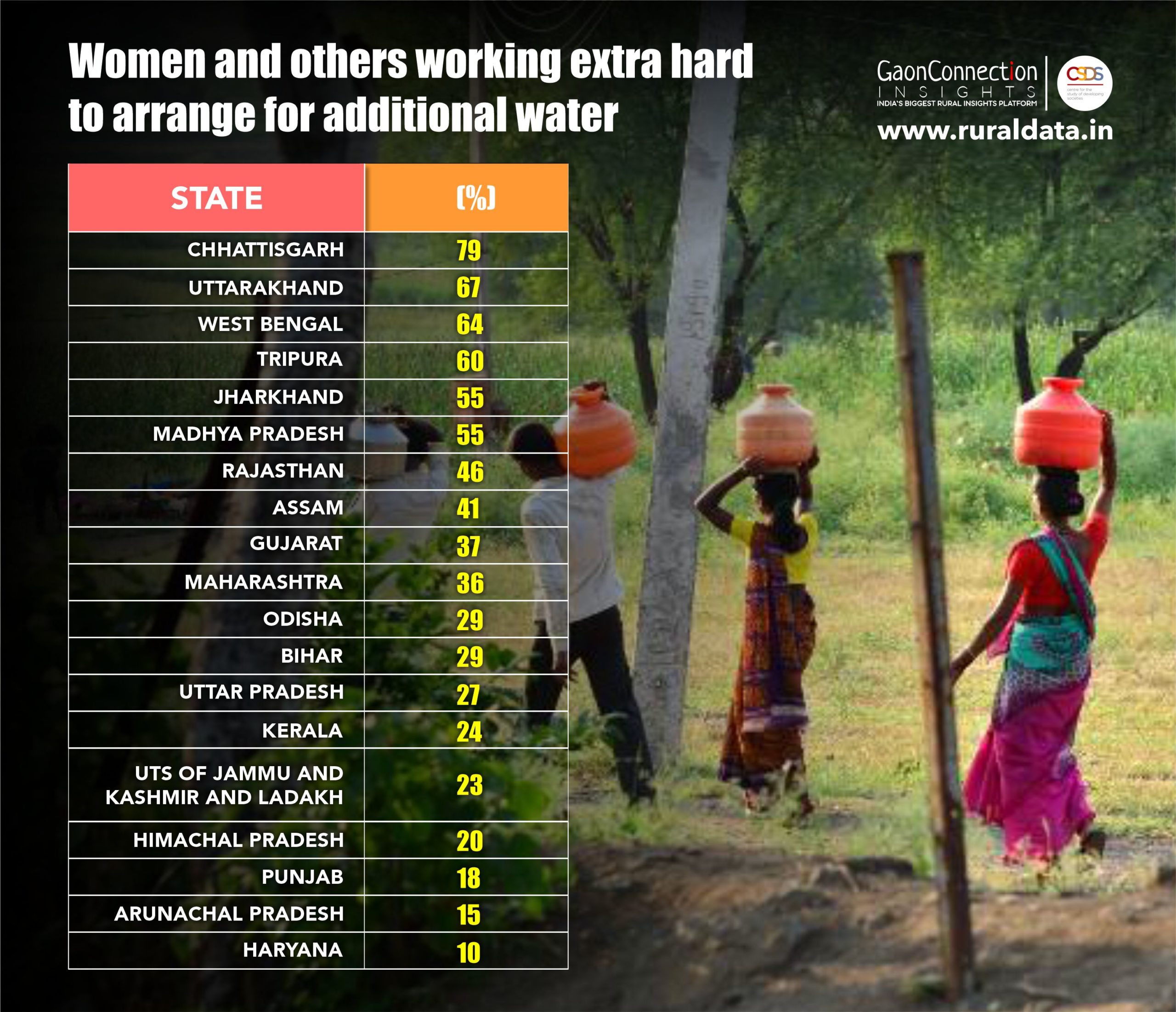
At present, nearly 820 million people in 12 major river basins of India are facing high to extreme water stress situations. In a recent publication of NITI Aayog titled ‘Composite Water Management Index’, about 82 per cent of rural households in India do not have individual piped water supply, and 163 million live without access to clean water close to their homes.
Women in rural India are often the primary providers of water for their families. For over years, these women have been burdened with fetching water. This coupled with the lockdown during peak summer monsoon of April and May put a direct burden on rural women.

“The burden on villagers for water aggravated amid the pandemic,” Shraddha Shrinagarpure, chief executive officer of Swaraj Foundation, a non-profit working with tribal communities of Palghar in Maharashtra, told Gaon Connection. According to her, villages in Mokhada block of Palghar suffer acute water scarcity for at least three months a year. Rivers and wells mostly run dry after November-December and acute water scarcity sets in after Holi, she said.
“For two pots of water, many couples in these tribal villages have to stay awake the entire night to fetch water from the local dugwells. One person descends into the dry well to collect water using a vaati [bow] to fill a handa [pot to store water]. Imagine the crisis for such people if they have to fetch extra water for regularly washing hands,” she added.
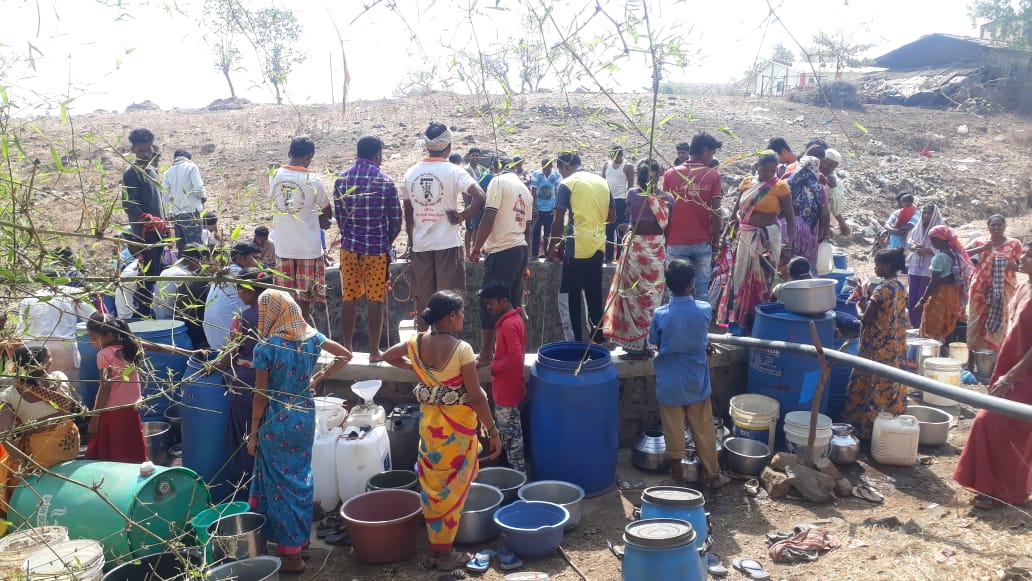
Highest water burden on Chhattisgarh’s rural women
In Chhattisgarh, eight in 10 households said women had to put in extra effort to access water during the COVID19 lockdown. Experts from local non-profits attribute two factors to this – fast depleting groundwater levels and chemical contamination of water by pollutants such as fluoride, arsenic, iron, and other heavy metals at many places in the state.
“Tribal people living in Bastar face water problems. As there are many mines here, people suffer because of laal paani [red contaminated water]. They are forced to drink that water,” Tameshwar Sinha, a resident of Bastar, Chhattisgarh, told Gaon Connection.
“Most of the government borewells throw laal pani. That is why many villagers look for natural sources of water. For which the rural women have to walk one or two kilometres a day. But what can they do, water from natural sources is better than drinking laal paani,” he added.

Water woes are not just a problem in the mining regions, but also various other parts of the state. “Apart from mining areas, there are several villages which have their own set of water problems. There is a high amount of fluoride in water here. Women have to go as far as one or one-and-a-half kilometres daily to arrange water. Some fetch water from jihiya (drains) or hand pumps from nearby villages,” Raju Samsun, a resident of Rajnandgaon district, Chhattisgarh told Gaon Connection. Samsun is associated with Lokshakti Samaj Sevi Sansthan, a non-profit which is working on water, sanitation and health issues in the state for the past 35 years.
As per news reports, the presence of heavy metals in the water has lead to high incidence of kidney failure among the villagers.
Water, an uphill task in Uttarakhand
Not only in Chhattisgarh, but the survey revealed women in 67 per cent rural households in Uttarakhand had to put in extra effort to access water. “We face a lot of problems in arranging water. The water here is supplied hardly once in two days. Not just for us, we have to arrange for water for our cows and goats too,” Vicky Kumar Arya, who lives in Almorah, Uttarakhand told Gaon Connection.
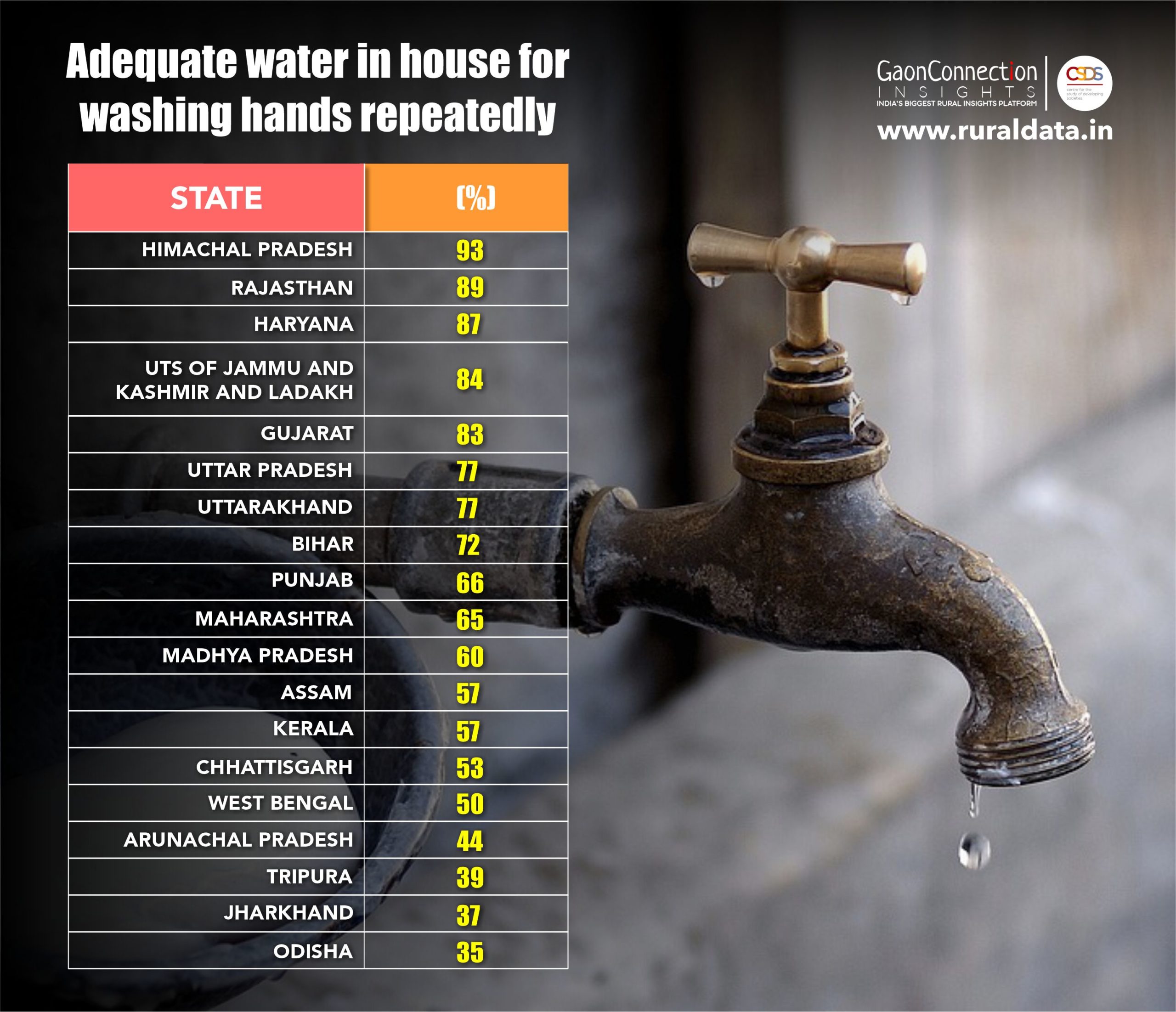
While rural households in Himachal Pradesh, Rajasthan, Haryana, Jammu & Kashmir, and Gujarat were most likely to have adequate water for handwashing, households in Odisha, Jharkhand, Tripura and West Bengal reported low water availability for handwashing repeatedly.
According to the Gaon Connection survey, 65 per cent rural households in Odisha did not have adequate water for handwashing in the pandemic. “In our village, there is a problem of water supply. In this time of trouble [pandemic], we are unable to go outside to fetch water,” Padmini Mudili, a resident of Puri, Odisha told Gaon Connection.
Many rural households in Jharkhand claimed they did not have piped water supply. The survey showed 55 per cent of rural households in the state work hard for additional water in the pandemic. “There’s no proper water facility for us here. We do not have hand pumps or taps. The other villages have already received these facilities,” Rupa Devi, a resident of Palojori village, Deoghar, Jharkhand told Gaon Connection.
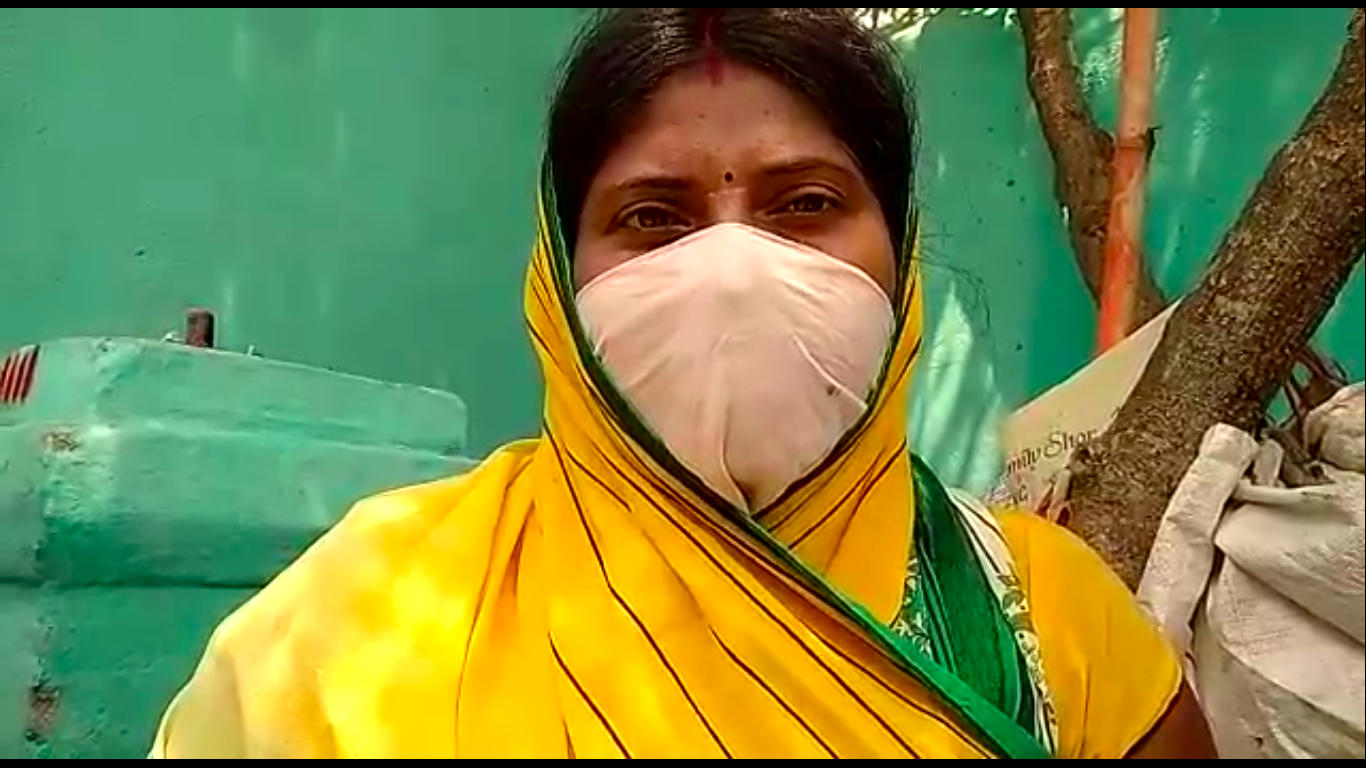
“Sometimes when the line gets damaged, labourers ask us for money. We have lost our livelihoods in the lockdown, how would we arrange for money? We want the government to look into this problem so that we get a regular supply of water,” she added.
Apart from Chhattisgarh, Uttarakhand, and Jharkhand, rural households in Uttar Pradesh also complained of water shortage in the lockdown. Many regions of the state such as Bundelkhand, Sonbhadra, Mathura face water shortage. The survey revealed around three (27 per cent) in every 10 rural households in the state had to work hard to get additional water.
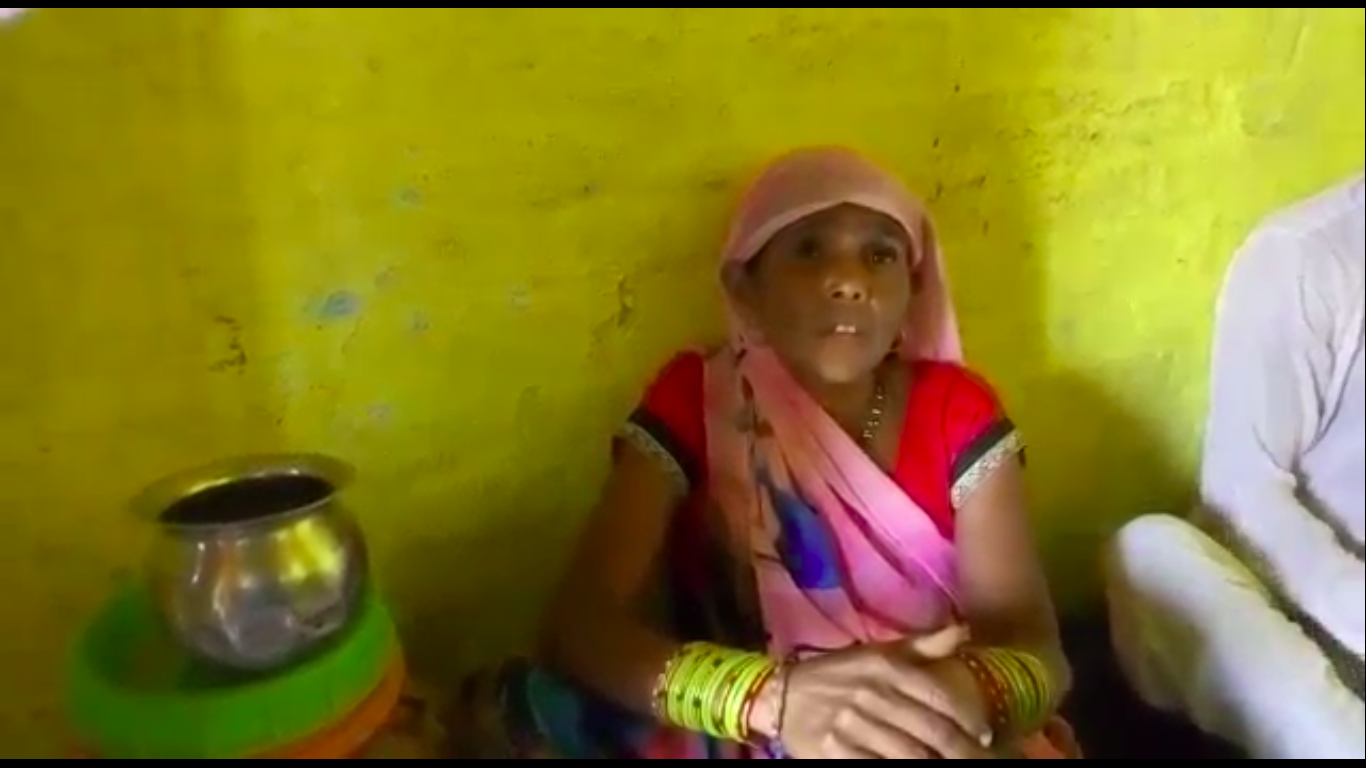
Pieshe, who lives in Maura village in Mathura of Uttar Pradesh faced a lot of trouble due to water shortage in the pandemic. But her woes were not limited to the trouble brought in by the pandemic, she has been suffering for water for long. “Hamne paani ka sukh to kabhi dekhyo na hai (I never had enough water in my entire life),” she lamented. “It has been 35 years of our marriage but I have been struggling for water for long. Every day I have to walk to another village to fetch water. Aadmi jiye ya mare, hume wanhi se paani lana hota ha (Whether we live or die, we have to bring water from there only),” she said, exasperatedly.
For a large population already suffering water woes, arranging water for handwashing seems like a distant dream.

